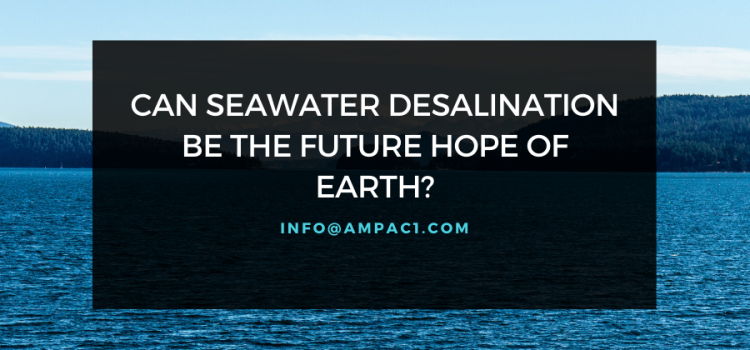Water scarcity is a global issue that’s impacting millions of lives every day. The situation is getting bad to worse. Can seawater desalination be the future hope of earth in such terrible circumstances? Can this technology help humans to get water in every part of the planet? Or is it another exaggerated technology? The answers to all these and several others can be found simply by scrolling down.
Where We Stand Now?
Seawater desalination has evolved in the last three decades. Prior to that, people were more focused on residential reverse osmosis or commercial reverse osmosis. For those who are unaware, seawater desalination is a technological process that allows people to turn seawater into contamination-free water that tastes as good as fresh water.
This technology is widely adopted in many parts of the world and has become a viable option when it comes to an alternative water supply. It allows people to make the most of seawater and ensure a sustainable and drought-free supply of water in many parts of the world. The use of this technology is quite limited now, but it’s being adopted at an exponential pace. According to one estimate, the production capacity will reach new highs by 2030.
At the end of the year 2015, about 180,000 seawater desalination plants were operational across the world. They had a capacity of about 23,000 million gallons per day. Almost half of the capacity was located in the Middle East and North Africa, regions where water scarcity reached new highs constantly, and many people don’t have enough water to survive. It is estimated that the US, Asia and Latin America might soon join the list of regions that don’t have access to pure water.
How It Works?
Desalinated water is produced by using seawater or brackish water. For those who are unaware, brackish water is a combination of freshwater and seawater and hence is less salty than seawater. As a result, it is also easier to treat than seawater. This might make people think why can’t we develop brackish water as a key source of water that needs to be processed through the seawater desalination process. It will surely be more cost and time-effective.
The answer to this question is that there are only limited sources of brackish water, and humans are depleting them at a fast pace. In most arid regions, the brackish water is almost completely utilized already.
The Technologies
Separating the salt from water is not an easy process. This is probably why the demand for seawater desalination and marine watermaker systems for ships, boats, etc. is rising every day. In most cases, semi-permeable reverse osmosis is the technology that helps make seawater fit to consume. The use of seawater reverse osmosis – SWRO is dominating the seawater desalination markets. Another technology that is rarely used is thermal evaporation that is only popular in some regions of the world and is not as popular as membrane separation.
The Role of the Ocean
The oceans of the world have more than 97 percent of the water resources of the earth. So, using ocean water is the only option left to humans when there is an extreme scarcity of water from other sources like rivers, lakes and streams, among others. Two reasons why ocean water is the right choice for seawater desalination is that it’s drought-free and is limitless. So, it can easily meet the ever-growing water demands of the earth’s population.
Money Matters
One of the main reasons why seawater desalination is not as popular as residential reverse osmosis, commercial reverse osmosis and is mostly used for applications like marine watermaker requirements is the cost factor. The desalination process needs a lot of energy, and it costs money. Thanks to technological advancement, these costs are reducing and will reduce further in the future as well. The better the SWRO technology becomes, the lower would be the costs associated with seawater desalination.
Final Words
It is hoped that you now have the answer to – can seawater desalination be the future hope of earth that is struggling with high water demands of humans and low availability of freshwater resources. The answer is this- the seawater desalination technology might not be the only option. Still, it sure is one of the best options we have to resolve the water crisis, water scarcity and contaminated water issues.
If you want to adopt seawater desalination for residential, commercial or industrial needs, AMPAC USA is the name you can trust. The company has helped people to get access to clean and pure water for decades by designing, manufacturing and customizing water treatment systems. The company also excels at providing residential reverse osmosis, commercial reverse osmosis and marine watermaker systems. All the products are built to last and offer maximum value for money—Call 909-548-4900 to know more.









